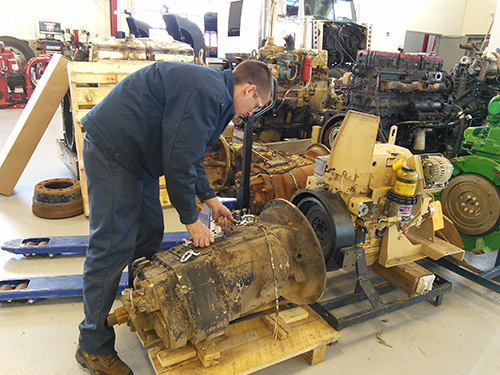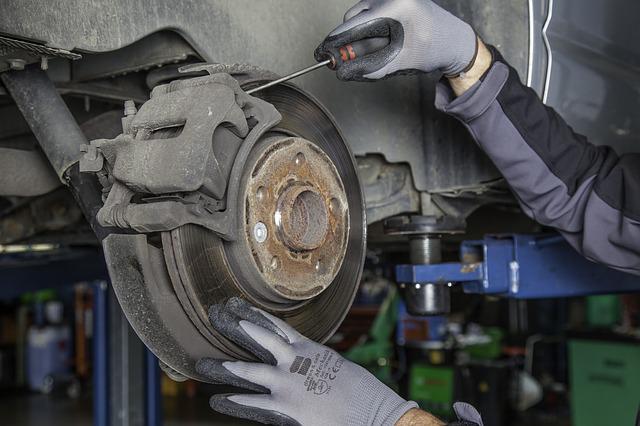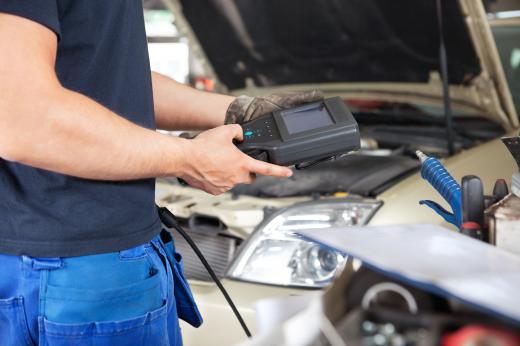
You will need a variety of tools to perform your job as a mechanic. These tools include those used by other mechanics, as well diagnostic equipment, like computers. It is important to have the right tools in order to work quickly and confidently. Learn how to become an automotive mechanic. ASE certification is an industry standard. The following article provides an overview of the job duties and requirements. It will also help to decide if you are a good fit for this career.
ASE certification represents the industry standard
While not all auto repair shops will require their technicians to be certified, many will. Earning your ASE Certification will give credibility and help you to compete in the field. It will give you an advantage over other applicants and make you more appealing to employers. This certification will distinguish you from other mechanics that do not have it.

Your job duties
Auto mechanics perform similar tasks to other types of technicians. They repair and maintain automobiles using specialized technology. They are usually responsible for maintaining and repairing a variety of automobile systems including brakes, exhaust, and electric suspensions. They are also responsible for diagnosing and determining the best action for the vehicle. An auto mechanic doesn't usually need a college education, but he or she should have some knowledge about how vehicles work.
Salary
Although the average annual salary for certified mechanics is approximately $40,000, it's possible to make a much higher salary. The top 10% of auto mechanics actually earned more than $71,940 annually. Certified mechanics make six-figure salaries, but these are only for large auto dealerships. Auto mechanics are paid according to their education, experience, and location. In the U.S., mechanics in Alaska and Fairbanks earn the highest salaries, at $59,000 per year, respectively. California, Arkansas and Mississippi average a salary of around $38,600 per year.
Requirements
There are several ways to become an auto mechanic. There are many post-secondary institutions that offer one-year certificate programs. If you are interested in becoming a certified mechanic, there are two options: a two-year degree or apprenticeship. You can take ASE tests during your apprenticeship if desired to become a licensed auto mechanic. You will need some experience in order to pass the test in either case.

Training programs
There are many training programs available for auto mechanics. Many training programs offer both classroom and hands-on training. The Automotive Service Excellence Body of Knowledge (ASE) can offer certification to graduates of these programs. ASE certification has been recognized by the industry as a mark of competence. Employers prefer to hire auto mechanics who have ASE certifications. This certifies that their skills are tested and proven.
FAQ
Does it really matter what college I choose?
It's not true. There is no difference between colleges in terms of how to get into the automobile industry. There are some schools that offer more specific programs than others.
How do I prepare for a mechanic apprenticeship?
Understanding what you're getting into is crucial. You need to understand the mechanics of cars and how they work. This way, you know where to start when you go on your first day at the garage.
You also need to know how to fix simple problems such as broken lights, tires, etc.
This should help you learn how to diagnose issues and repair them yourself.
You'll also need to know how different parts fit together to put them back together again.
Finally, be proficient in using tools safely and efficiently.
All these things will help you to become a competent mechanic.
What's the difference between a mechanic and an automotive technician?
Although they may be similar, they are not identical. Both a mechanic and an automotive technician can repair cars.
A mechanic must have good manual dexterity and be able to perform simple tasks quickly. They should be able to accurately diagnose problems and repair them efficiently.
An automotive technician must be more technically proficient than a mechanic. They need to be able use tools such drills and wrenches, and read blueprints.
They must also be able perform complex procedures safely. They should also be familiarized with the different types of engines as well as electrical systems.
They must also be capable of understanding how parts interact.
A mechanic typically earns less than an automotive technician. However, both careers offer great opportunities.
How long is an automotive course?
An automotive course lasts 3 years.
The first year is spent learning about cars and theory. The second year will be spent in practical training. Here you will learn how fix engines, drive and other mechanic jobs. The final year is spent doing a placement at a local garage, which gives you experience in fixing real-world problems.
Statistics
- According to the BLS, total auto technician employment is expected to exceed 705,000 by 2030. (uti.edu)
- Apprentice mechanics earn significantly less hourly than mechanics who have completed training, with a median wage of approximately $14.50 an hour, according to PayScale. (jobhero.com)
- 52% of Mechanics in the United States think their salaries are enough for the cost of living in their area. (indeed.com)
External Links
How To
How to diagnose your vehicle properly for repair
You should first examine the symptoms your car is showing to determine if it requires repairs. Then, follow these steps to diagnose your vehicle properly.
-
Check engine lights. Check the dashboard light indicators such as the engine light indicator, the oil pressure gauge, the battery light indicator, the coolant temperature gauge, and the RPM gauge. You may have a problem with your vehicle if any of the indicators are flashing for more than a few days.
-
Examine the treads of the tires. Tires that are worn can cause issues with handling and braking. You should also inspect the wheel treads. You should ensure that they are clean and smooth. You can do this by taking off the wheels. A flashlight can be used to check how worn the treads are.
-
Monitor the level and consistency of your brake fluid. You should always keep track of the amount of brake fluid in your vehicle. This will ensure your brakes function properly. If your brake fluid level is low they might not work properly when you apply pressure.
-
Make sure to test the suspension system. Most vehicles have a suspension system that absorbs shocks and vibrations. It allows for better control, smooth acceleration, and deceleration. It might feel uncontrollable or wobbly if your vehicle is suffering from a suspension problem. If you are unsure if your vehicle is suffering from a suspension problem, put weight on the front and rear axles to check the movement.
-
Take a look at the steering column. Steering columns connect the steering wheels to other parts of the vehicle. Steering columns can be damaged by accidents. It is recommended to replace any steering column that feels loose, or shakey.
-
Observe the exhaust pipes. The exhaust pipes transport gases from the combustion chamber to outside. If the exhaust pipe is damaged or leaks, harmful fumes can enter your cabin. If your tailpipe bends, it is important to fix it immediately.
-
Check under the hood. To check for unusualities, look under the hood. There could be fluid leaking from your engine. You should also contact a professional technician if there is an unusual odor coming from the engine compartment.
-
You should inspect your air filter. Your vehicle's air filter collects dust and debris from the outside environment. Dirty air filters can cause your vehicle to run poorly. Replace your air filter regularly.
-
Verify the fan belt. The fan belt is the link between the engine and the transmission. If the fan belt is damaged, the engine won’t turn. The process of replacing the belt is straightforward. All you need is a screwdriver and some pliers.
-
Check the radiator hose and hoses. The radiator hose is used to carry water from the radiator to your engine. If the hose becomes damaged or cracked, hot liquid can be emitted onto the engine. To repair the hose, you will only need to use a pair needle-nosepliers and a wire brush.
-
Be sure to inspect your windshield wipers. Windshield wipers use electricity to remove snow and rain. If they stop functioning, they can leave streaks in your window glass. You can fix the problem by changing the washer fluid.
-
Check the battery cables. The battery cables provide power for the electrical systems in your car. Make sure you disconnect the negative cable before replacing batteries. Failure to do so can damage your alternator.
-
You should check the headlights. Headlights help you see the road ahead. Poor visibility can result if the headlights don't function properly. Inspect the bulbs for signs of burnt out.
-
Be sure to check the lights. If you approach other drivers at night, lights will warn them. It could cause distraction and even lead to an accident if it doesn't work.
-
You should inspect your brakes. Brakes will reduce the speed of your car in case of an accident. You may lose control of your vehicle and crash if the brakes don't function properly.
-
Change your oil. Oil keeps your engine lubricated. It helps keep metal parts from getting too worn down. It is recommended to change the oil each month.